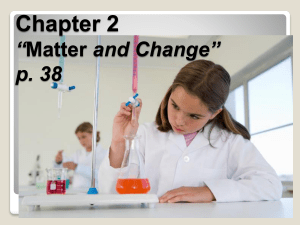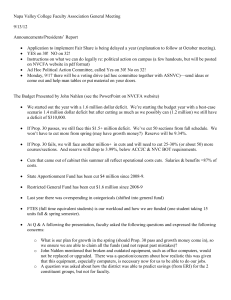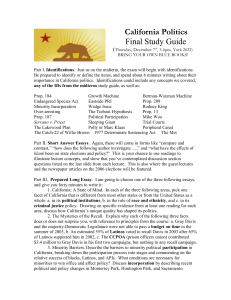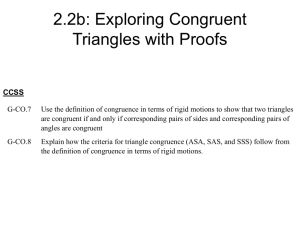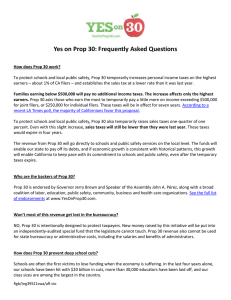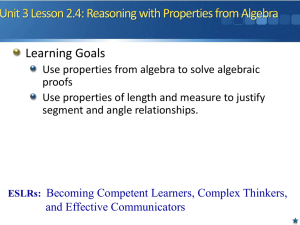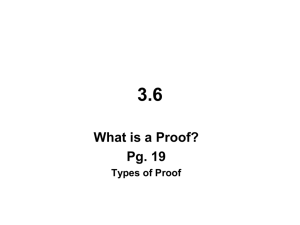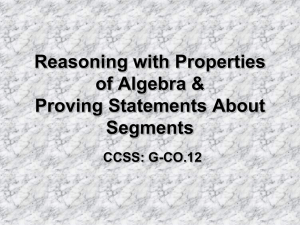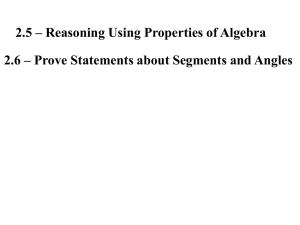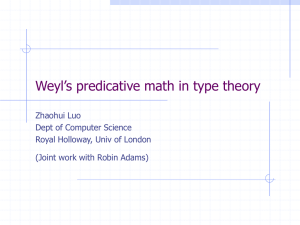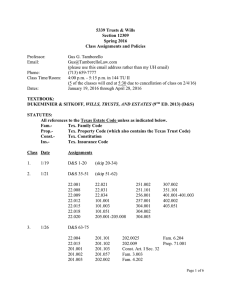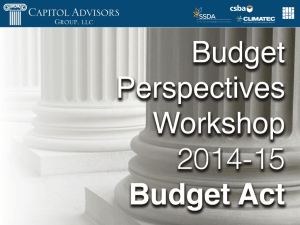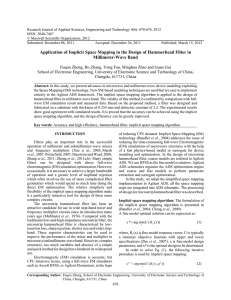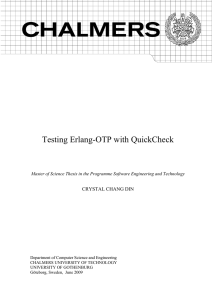Chapter 3 Notes
advertisement
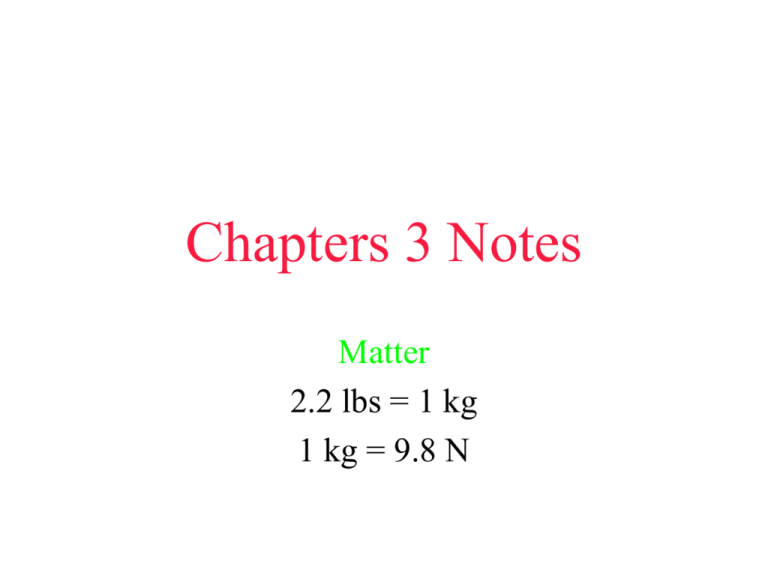
Chapters 3 Notes Matter 2.2 lbs = 1 kg 1 kg = 9.8 N I.Classes of Matter video #12 -Matter exists as elements, compounds, mixtures, or solutions *Homogeneous matter: identical properties throughout. Ex: salt h20 *Heterogeneous matter: different properties Ex. Fruit salad, shovel of dirt II. Mixtures video #11 pp41 *two or more substances mixed together but not chemically combined. A. Properties of Mixtures -substances keep their separate ident and most of their own prop. -may chng in physical appearance. Ex. Sugar and water, mp, bp -subst can be present in any amnt. -subst can be separated out. B. Types of Mixtures 1.Heterogeneous mixture *particles are large enough to be seen and settle out. EX: concrete 2. Homogeneous mixture *particles very small and do not settle out. EX: Stainless steel *Colloids: Larger particles but left in suspension Ex: smoke, C. Solutions *one substance dissolves in another. Ex. Ocean water, tea, air. -3 Important Prop of Solutions 1.part not large enough to be seen 2.part. are evenly spread out(all parts of sol are ident) 3.solution doesn’t settle out of time Video #9 *Alloy: solids dissolved in solids ex: brass, sterling silver DEMO III. Elements videos #10 *Pure Subst: made of only one kind of material and has definite prop *Element: simplest pure subst. ; cannot be chngd into simpler subst by heating or any chem process -Ex A. Elements and Atoms pp39 *Atom: smallest particle of an element with the prop. of that element. B. Chem Symbols *represent elements IV. Compounds pp40 *two or more elements chem. combined. Ex: sugar, baking soda, TNT • A compound is two or more elements combined together. • This is a picture of a salt compound. -Can be broken down into simp subst. >by heating, electricity -The prop of a cmpnd are very diff from the prop of the elements in it. *Molecules: 2 or more atoms chem. bonded together. -smallest particle of a cmpnd that has all the prop of that cmpnd. • A molecule is the smallest particle of a substance that exists alone. • This is a picture of a water molecule. It is two parts hydrogen and one part oxygen. *Chemical Formulas: 1. What it is 2. How much *Chemical equation: description of a chem. rxn using symbols and formulas. Chemical equation: 1. What you put in 2. What you get out 3. How much *Law of conservation of mass: *Law of conservation of nrg: *nrg: ability to do work pp77 *Diatomic Molecules: (super 7) Br, I, N, Cl, H, O, F *Chemical Rxn: 1. Bubbles 2. Formation of a precipitate 3. Heat and light given off pp184

